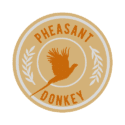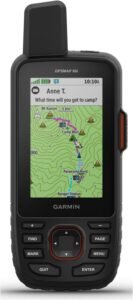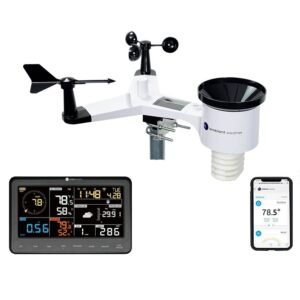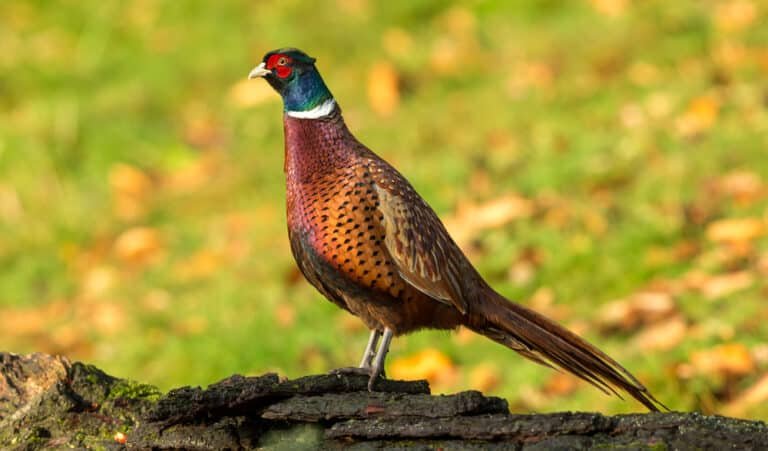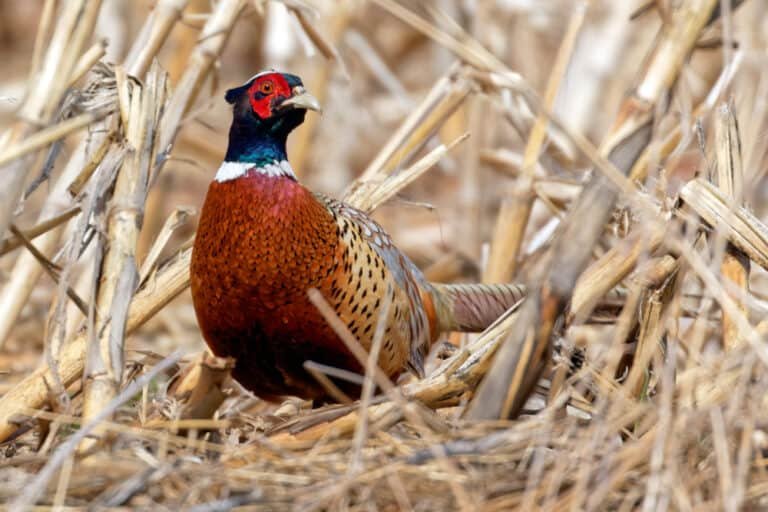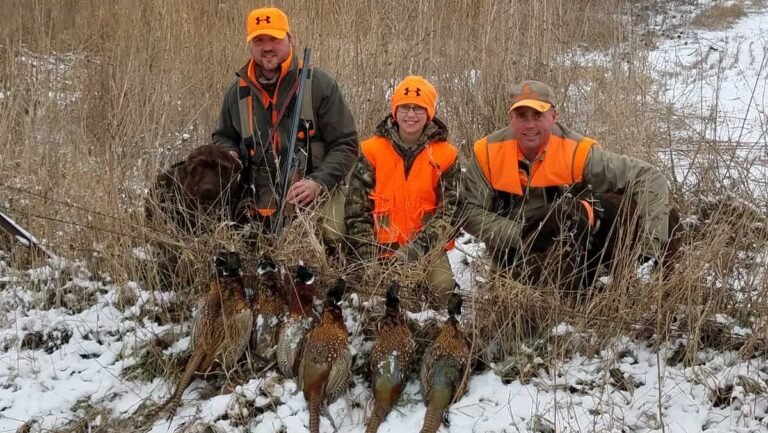Pheasant Hunting Technology: 10 Powerful Tech Gadgets
Imagine pinpointing your dog’s location from a mile away or knowing exactly where that pheasant flushed last season. Welcome to pheasant hunting technology, where we review the high-tech future of pheasant hunting.
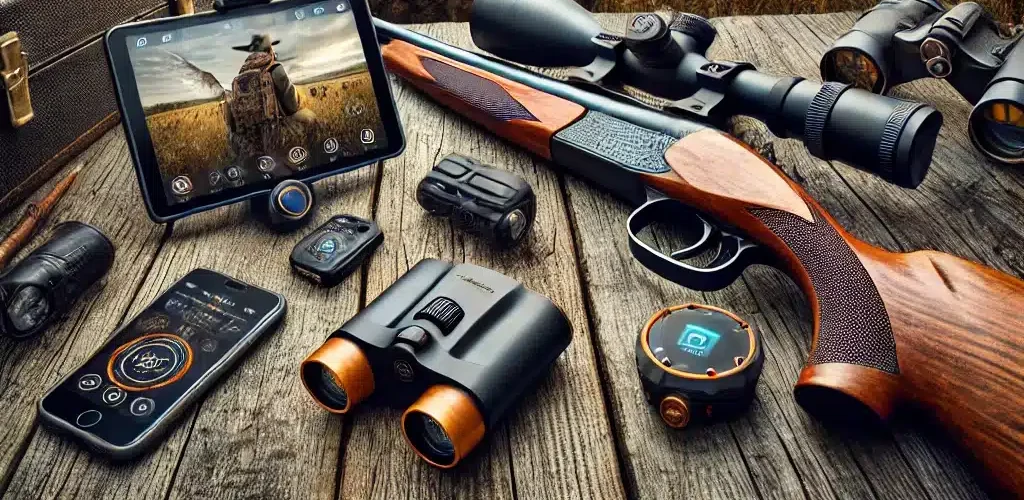
Gone are the days when a trusty shotgun and a good hunting dog were all you needed for a successful pheasant hunt. Today’s hunters are embracing a new ally in their pursuit of these elusive game birds: technology.
From GPS devices that track your dog’s every move to apps that predict prime hunting conditions, modern tech is revolutionizing the way we approach pheasant hunting.
In this comprehensive guide, we’ll explore the cutting-edge gadgets and applications that are changing the game for pheasant hunters. Whether you’re a tech-savvy hunter looking to up your game or a traditionalist curious about how technology can complement your skills, we’ve got you covered.
We’ll dive into the best GPS devices, must-have hunting apps, game-changing electronic calls, and even the controversial world of hunting drones.
But don’t worry – we haven’t forgotten the importance of good old-fashioned hunting skills. We’ll also discuss how to strike the perfect balance between leveraging technology and maintaining the core competencies that make hunting such a rewarding pursuit.
So, grab your smartphone (it’s about to become your new favorite hunting tool) and join us as we explore the exciting intersection of technology and pheasant hunting. Your most successful season yet is just a few gadgets away.
GPS Devices for Pheasant Hunting
Global Positioning System (GPS) technology has become an indispensable tool for the modern pheasant hunter. Let’s explore the three main categories of GPS devices that can enhance your hunting experience:
Handheld GPS Units
Dedicated handheld GPS units are rugged, reliable, and designed for outdoor use. They offer several advantages for pheasant hunters:
- Top models for hunters:
- Garmin GPSMAP 66i ($400 as shown)
- Bushnell BackTrack ($160)
- Magellan eXplorist 350H ($250)
- Key features to look for:
- Preloaded hunting maps
- Long battery life
- Waypoint marking
- Track recording
- Waterproof and durable design
Pro Tip: Look for models with GLONASS support and GPS for improved accuracy in dense cover.
GPS Collars for Hunting Dogs
GPS dog collars have revolutionized the way hunters work with their four-legged companions. They offer several benefits:

- Benefits of tracking your dog:
- Monitor your dog’s location in real-time
- Set up virtual boundaries (geofencing)
- Track your dog’s speed and distance covered
- Some models include training features
- Popular brands and models:
- Garmin Alpha 200i ($550 as shown)
- SportDOG TEK Series 2.0 ($260)
- Dogtra Pathfinder ($380)
Key Consideration: Check the range of the GPS collar. Some high-end models can track your dog up to 9 miles away.
Smartphone GPS Apps for Hunting
With the power of smartphones, hunters now have access to sophisticated GPS capabilities in their pockets.
Pros and cons compared to dedicated devices
- Pros:
- Cost-effective (often free or low-cost apps)
- Regular updates and new features
- Integration with other phone features (camera, messaging)
- Cons:
- Battery life concerns
- Less rugged than dedicated devices
- Potential for distractions (notifications, calls)
Top-rated hunting GPS apps
- onX Hunt: Offers comprehensive maps with property boundaries
- HuntStand: Provides weather forecasts and hunting land management tools
- BaseMap: Features 3D mapping and offline functionality
Pro Tip: Always carry a portable charger when using your smartphone for GPS in the field.
Remember, while GPS technology can greatly enhance your hunting experience, it’s crucial to maintain your traditional navigation skills as a backup. In the next section, we’ll explore hunting-specific apps that can further boost your chances of a successful pheasant hunt.
Hunting Apps
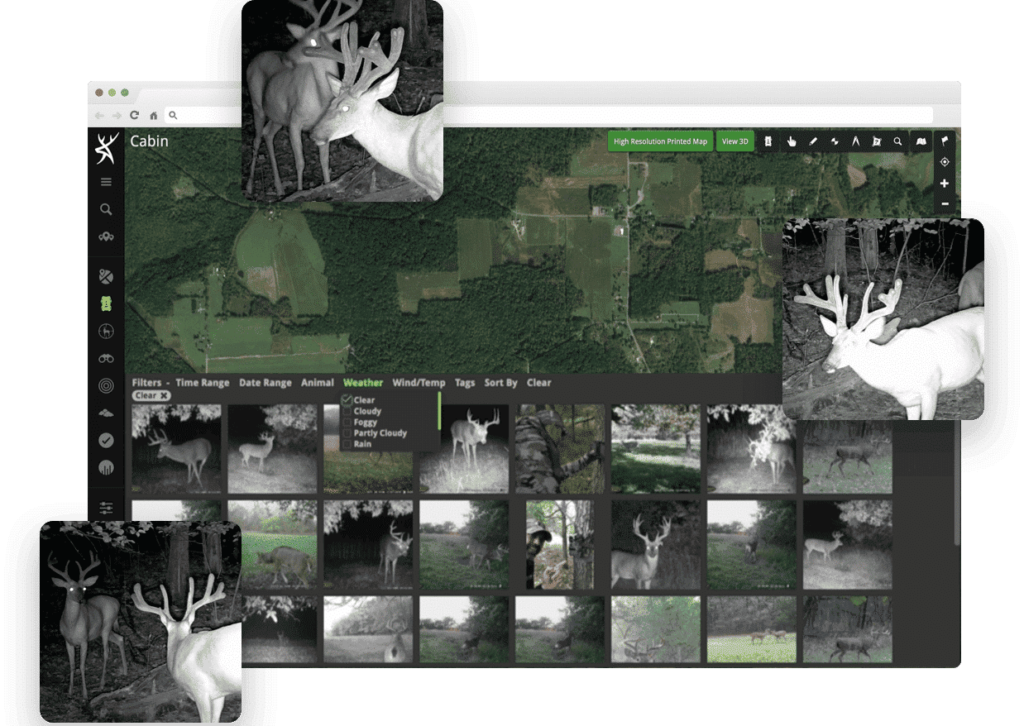
Smartphone apps have become powerful tools for pheasant hunters, offering many functionalities at your fingertips. Here are some of the most useful types of apps for enhancing your hunting experience:
Mapping and Land Ownership Apps
These apps provide detailed maps and property information, which are crucial for staying legal and finding prime hunting spots.
- onX Hunt
- Features: Property boundaries, landowner names, public land areas
- Pros: Offline maps, custom waypoints, hunting units
- Price: $29.99/year
- HuntStand
- Features: 3D mapping, property lines, wind direction
- Pros: Free basic version, social sharing features
- Price: Free (basic), $29.99/year (pro)
Pro Tip: Always respect property boundaries and obtain necessary permissions before hunting on private land.
Weather Apps for Hunters
Weather conditions can significantly impact pheasant behavior and hunting success.
- ScoutLook Hunting
- Features: Hyperlocal forecasts, wind direction for scent control
- Pros: Hunt log, GPS mapping
- Price: Free (with in-app purchases)
- Weather Underground
- Features: Detailed forecasts, radar maps, severe weather alerts
- Pros: Highly accurate, user weather stations
- Price: Free (ad-supported), $19.99/year (ad-free)
Key Consideration: Pay special attention to wind direction and speed, as these factors influence pheasant behavior and scent dispersal.

Shot Tracking Apps
These apps help you improve your shooting skills and track your success.
- Shotgun Journal
- Features: Log shots, analyze patterns, set goals
- Pros: Detailed statistics, multiple gauge support
- Price: $4.99
- Hunting Journal
- Features: Shot logging, harvest records, photos
- Pros: Cloud sync, multiple species support
- Price: Free (basic), $29.99/year (premium)
Game Call Apps
While not replacing physical calls, these apps can be useful for practice or as a backup.
- iHunt Calls
- Features: Various game calls, including pheasant
- Pros: High-quality sounds, easy to use
- Price: $3.99
- Hunting Calls
- Features: Multiple species, including pheasant calls
- Pros: Free, good variety of calls
- Price: Free (ad-supported)
Note: Use electronic calls responsibly and check local regulations, which may be prohibited in some areas.
Hunting Regulation and License Apps
Stay up-to-date with hunting laws and manage your licenses easily.
- Official State Wildlife Apps
- Features vary by state but often include:
- Digital licenses
- Regulation updates
- Season dates
- Pros: Always current, often free
- Price: Usually free
- Features vary by state but often include:
- Pocket Ranger
- Features: Regulations for multiple states, GPS features
- Pros: Offline access, safety features
- Price: Free
Pro Tip: Always double-check regulations through official channels, as app updates may lag behind sudden changes in laws or seasons.
By leveraging these apps, you can enhance your pheasant hunting experience, improve your skills, and ensure you’re hunting legally and responsibly. In the next section, we’ll explore how digital cameras and action cams can add a new dimension to your hunts.
Digital Cameras and Action Cams
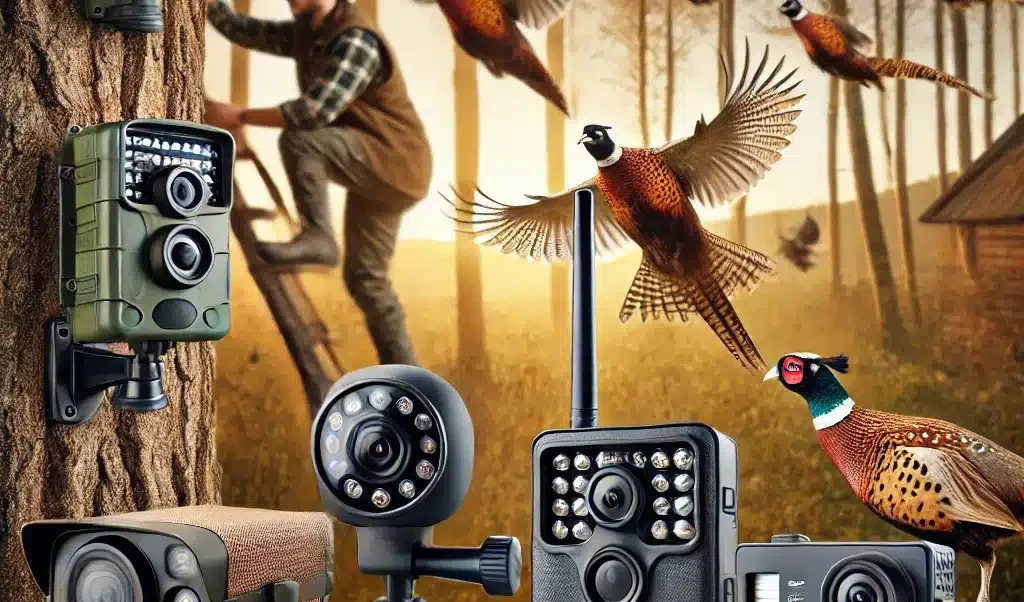
Capturing pheasant hunting adventures can be rewarding to preserve memories, analyze your technique, and share experiences with fellow hunters. Let’s explore how you can incorporate cameras into your hunts.
Benefits of Recording Your Hunt
- Memory preservation: Relive your best hunts and share them with friends and family.
- Training tool: Review footage to improve your technique or your dog’s performance.
- Social media content: Share your successes and experiences with the hunting community.
- Safety and legal protection: Document any incidents or disputes in the field.
Top Models for Outdoor Use
- GoPro HERO9 Black
- Pros: Waterproof, 5K video, excellent image stabilization
- Cons: Higher price point
- Price: $285
- DJI Osmo Action
- Pros: Dual screens, 4K video, rugged design
- Cons: Battery life could be better
- Price: $270
- Akaso Brave 7 LE
- Pros: Affordable, waterproof, dual screens
- Cons: Image quality not as high as premium models
- Price: $110
- Olympus Tough TG-6
- Pros: Waterproof, shockproof, good low-light performance
- Cons: Larger than action cams
- Price: $449.99
Tips for Capturing Great Hunting Footage
- Use hands-free mounts: To keep your hands free for hunting, consider chest mounts, head straps, or gun mounts.
- Optimize your settings:
- Use 1080p at 60fps for a good balance of quality and file size
- Enable image stabilization for smoother footage
- Use pro tune or similar advanced settings for better color grading in post-production
- Capture diverse shots:
- Wide-angle shots of the landscape
- Close-ups of your dog working
- Point-of-view shots while walking or shooting
- Slow-motion footage of birds flushing or dogs retrieving
- Be mindful of sound:
- Use a wind muff to reduce wind noise
- Consider an external microphone for better audio quality
- Respect the hunt:
- Don’t let filming interfere with your or others’ hunting experience
- Be aware of local regulations regarding filming while hunting
- Battery life and storage:
- Carry extra batteries and SD cards
- Use a portable charger for extended hunts
- Edit your footage:
- Use simple video editing software to create highlight reels
- Add music, slow-motion effects, or narration to enhance your videos
- Ethical considerations:
- Always prioritize ethical hunting practices over getting the perfect shot
- Be respectful when sharing harvest footage on social media
Pro Tip: Practice using your camera gear before the hunt. You don’t want to miss a great moment because you’re fumbling with settings.
Incorporating a camera into your pheasant hunting kit can create lasting memories and improve your skills. The next section we’ll explore how electronic game calls can add another technological edge to your hunting arsenal.
Electronic Game Calls
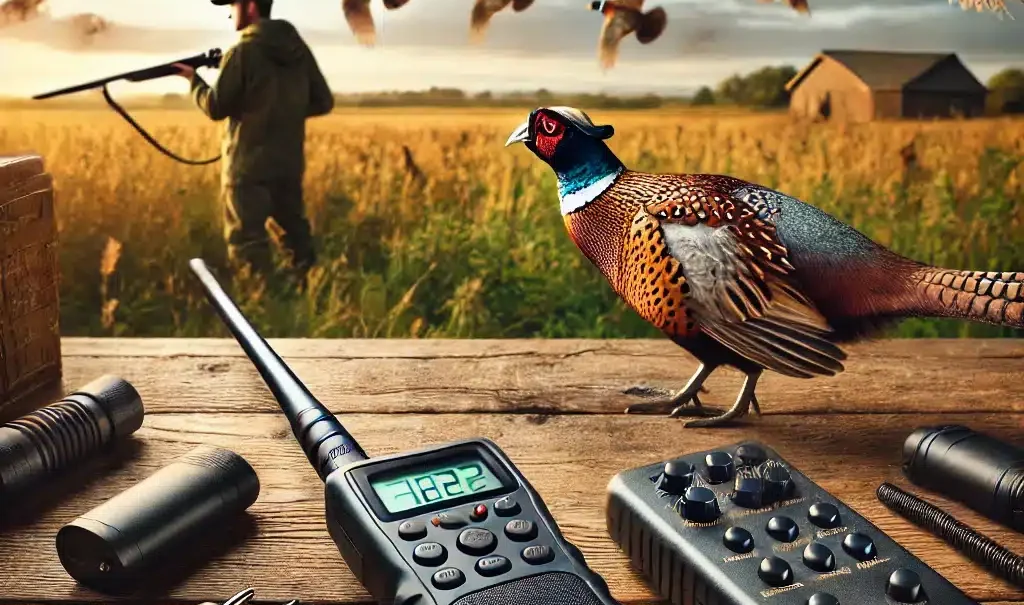
Electronic game calls have become increasingly popular among hunters, offering a consistent and hands-free way to attract game. While traditionally more common in predator hunting, they can also be useful for pheasant hunting in certain situations.
How They Work and Their Effectiveness
- Functionality:
- Pre-recorded pheasant calls stored in a digital device
- Plays through a speaker, often with volume and sound selection controls
- Some models offer remote control operation
- Types of Calls:
- Rooster crows
- Hen calls
- Distress calls
- Effectiveness:
- It can be useful for locating birds in large fields
- May help in drawing birds out of heavy cover
- It is particularly effective when used in combination with traditional calling techniques
Legal Considerations
The legality of electronic calls for pheasant hunting varies by location:
- Federal Regulations:
- Electronic calls are legal for hunting non-migratory game birds like pheasants on a federal level
- However, state laws may be more restrictive
- State Regulations:
- Many states prohibit the use of electronic calls for pheasant hunting
- Some states allow their use only during certain seasons or on private land
- Always check your local regulations before using electronic calls
- Ethical Considerations:
- Some hunters consider electronic calls less sporting
- Use them responsibly to avoid over-harvesting or disturbing non-target species
Top-Rated Electronic Game Calls for Pheasants
While many electronic calls are designed for predator hunting, some can be effective for pheasants:
- FOXPRO X2S
- Pros: 100+ pre-loaded sounds, remote control, customizable
- Cons: Expensive, may be more than needed for just pheasant hunting
- Price: $399.99
- Primos Hunting Speak Easy
- Pros: Compact, easy to use, good sound quality
- Cons: Limited sound options compared to high-end models
- Price: $129.99
- ICOtec GEN2 GC300
- Pros: 12 programmable sounds, remote operation, affordable
- Cons: Less durable than some higher-end models
- Price: $79.99
- Western Rivers Mantis 75R
- Pros: 75 pre-loaded sounds, compact, water-resistant
- Cons: Sound quality not as high as premium models
- Price: $99.99
Tips for Using Electronic Calls
- Placement:
- Position the call 30-50 yards away from your hiding spot
- Place it in an area with good sound projection
- Volume Control:
- Start with a lower volume and increase as needed
- Avoid using maximum volume, which can sound unnatural
- Timing:
- Use calls sparingly, mimicking natural pheasant behavior
- Allow periods of silence between calls
- Combine with Decoys:
- Using a pheasant decoy near your electronic call can increase the effectiveness
- Practice:
- Familiarize yourself with the device and its sounds before the hunt
- Battery Life:
- Ensure your device is fully charged before the hunt
- Carry spare batteries for longer hunts
Remember, while electronic calls can be useful tools, they shouldn’t replace traditional hunting skills and techniques. Instead, they should supplement your existing hunting strategies.
Drone Technology in Pheasant Hunting
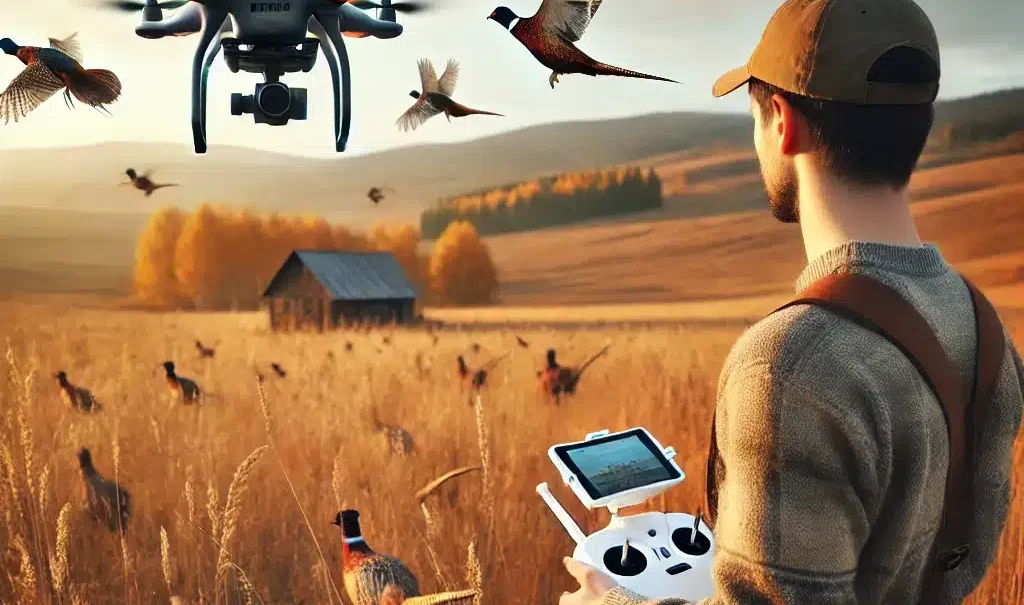
The use of drones in hunting is a topic of much debate in the hunting community. While they offer potential benefits, their use is controversial and heavily regulated. Let’s explore the possibilities, limitations, and considerations surrounding drone use in pheasant hunting.
Potential Uses and Benefits
- Scouting:
- Survey large areas of land quickly
- Identify potential pheasant habitats
- Spot game without disturbing the area
- Land Management:
- Monitor food plots and cover
- Assess habitat quality
- Plan habitat improvements
- Recovery:
- Locate downed birds in dense cover
- Aid in finding lost hunting dogs
- Photography/Videography:
- Capture aerial footage of hunts
- Document hunting land for record-keeping or sharing
Legal and Ethical Considerations
- Federal Regulations:
- The Airborne Hunting Act prohibits using aircraft (including drones) to hunt, harass, or take wildlife
- FAA regulations require drone registration and pilot certification for certain uses
- State Laws:
- Many states have explicit bans on using drones for hunting
- Some states allow drone use for scouting outside of hunting season
- Regulations can vary widely, always check local laws
- Ethical Debates:
- Fair chase concerns: Does drone use give hunters an unfair advantage?
- Disturbance to wildlife: Drones may stress animals and disrupt natural behaviors
- Impact on other hunters: Drone use might interfere with others’ hunting experiences
- Safety Considerations:
- Potential for accidents or injuries from drone malfunctions
- Privacy concerns when flying over private property
Recommended Models for Hunters
If using drones for pre-season scouting or land management where legal:
- DJI Mavic Air 2
- Pros: Compact, good battery life, high-quality camera
- Cons: Expensive, maybe more than needed for basic scouting
- Price: $999
- Autel EVO Lite+
- Pros: Excellent camera, good in low light, long flight time
- Cons: High price point, complex for beginners
- Price: $1,299
- DJI Mini 2
- Pros: Very portable, good video quality, affordable
- Cons: Less wind-resistant, shorter range than larger models
- Price: $449
Best Practices for Responsible Drone Use
- Know the Law:
- Research and comply with all federal, state, and local regulations
- Obtain necessary permits or licenses
- Respect Wildlife:
- Maintain a safe distance from animals
- Limit flight time to minimize disturbance
- Be Considerate of Others:
- Avoid flying near other hunters or in popular hunting areas
- Don’t interfere with others’ hunting experiences
- Prioritize Safety:
- Maintain visual line of sight with your drone
- Avoid flying in harsh weather conditions
- Be aware of obstacles like trees or power lines
- Use as a Supplementary Tool:
- Don’t let drone use replace traditional hunting skills and practices
- Use drones to enhance your understanding of the land, not to locate game during hunts
- Educate Yourself:
- Take a drone piloting course to improve your skills
- Stay updated on changing laws and best practices
Remember, while drone technology offers exciting possibilities, it’s crucial to use it responsibly and ethically. The goal should always be to enhance our connection with nature and the hunting experience, not to exploit or disturb wildlife.
High-Tech Hunting Clothing

Advancements in textile technology have revolutionized hunting apparel, offering pheasant hunters improved comfort, concealment, and performance in the field. Let’s explore some of the cutting-edge clothing options available to today’s hunters.
Heated Gear for Cold Weather Hunts
Benefits
- Extends hunting season into colder months
- Improves comfort and focus during long waits
- Reduces bulky layering
Top Products
- Ororo Heated Vest
- Pros: 10 hours of heat, machine washable, water-resistant
- Cons: Requires charging, maybe too warm for active hunting
- Price: $170
- DEWBU Heated Hunting Jacket
- Pros: Camouflage design, three heat settings, wind and water-resistant
- Cons: Expensive, battery life varies with heat setting
- Price: $150
Scent-Control Technology

How It Works
- Antimicrobial treatments to reduce odor-causing bacteria
- Activated carbon or zeolite to absorb odors
- Silver nanoparticles for odor neutralization
Top Products
- ScentLok Full Season TAKTIX Hunting Jacket (shown above)
- Pros: Carbon alloy for odor adsorption, quiet fabric, multiple pockets
- Cons: Requires periodic reactivation, expensive
- Price: $250
- Under Armour Men’s Storm Hunting Pants
- Pros: Scent-control technology, water-repellent, brush-facing fabric
- Cons: Sizing can be tricky and maybe warm for the early season
- Price: $90
Moisture-Wicking and Temperature-Regulating Fabrics
Technologies
- Synthetic fibers (polyester, nylon) for moisture management
- Merino wool for natural temperature regulation
- Phase-change materials for adaptive insulation
Top Products
- Sitka Gear Core Lightweight Crew LS
- Pros: Excellent moisture-wicking, odor-resistant, quick-drying
- Cons: Expensive, may snag on brush
- Price: $80
- First Lite Kiln Hoody
- Pros: Merino-blend fabric, thumbholes for warmth, versatile layering piece
- Cons: Pricey, requires special care when washing
- Price: $135
Layering Tips
- Base layer: Moisture-wicking material against skin
- Mid layer: Insulating layer (fleece or wool)
- Outer layer: Weather-protective shell
Advanced Camouflage Patterns

Technologies
- Digital patterns for better blending
- 3D leafy suits for added texture
- Region-specific patterns
Top Products
- HECS Stealthscreen Suit
- Pros: Blocks electromagnetic energy, lightweight
- Cons: Effectiveness debated; must be worn as a base layer
- Price: $250
- Gamehide Flatland Camo Jacket
- Pros: Specific pattern for grassland hunting, waterproof, quiet fabric
- Cons: Limited use outside of specific terrain
- Price: $80
Considerations:
- Match camo to your hunting environment
- Consider the seasonality of patterns
- Remember, staying still is more important than perfect camo
Smart Fabrics and Wearable Tech
Emerging Technologies
- Fabrics with built-in GPS
- Clothing with integrated health monitors
- Smart heating systems that adjust to body temperature
Products to Watch
- Skiin Smart Clothes: Underwear with built-in health monitoring
- SUPA Powered Smart Sports Bra: Tracks heart rate and other metrics
Future Possibilities
- Clothing that adapts camouflage patterns in real-time
- Gear with solar charging capabilities for heated clothing and devices
- Fabrics that enhance physical performance or reduce fatigue
Remember, while high-tech clothing can enhance your hunting experience, it’s not a substitute for skill, patience, and knowledge of pheasant behavior. Choose gear that complements your hunting style and the specific challenges of your hunting environment.
Other Useful Gadgets
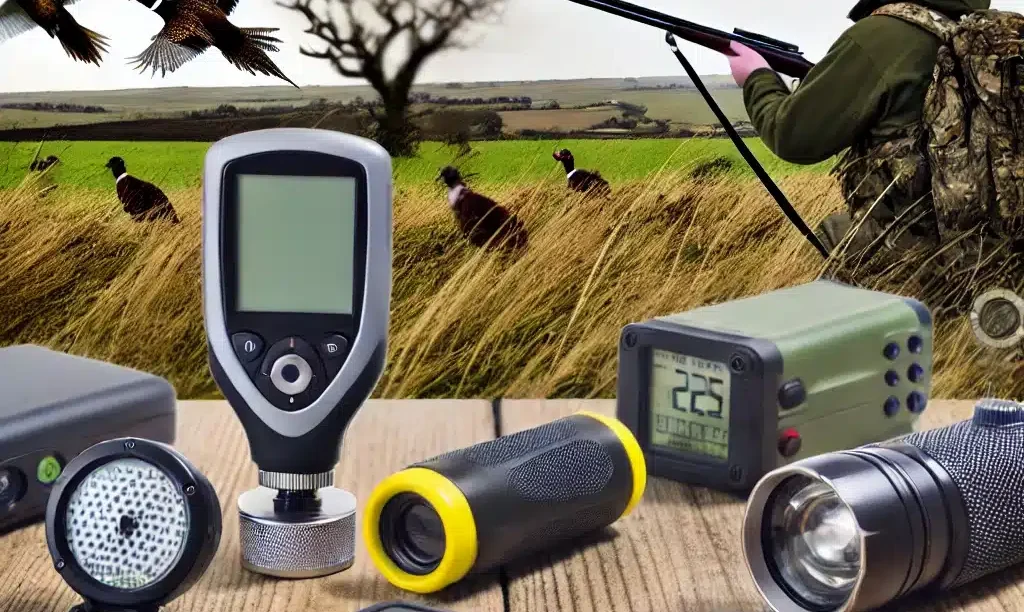
While we’ve covered major tech categories for pheasant hunting, several other gadgets can enhance your hunting experience. Let’s explore some of these additional tools:
Rangefinders
Benefits
- Improve shot accuracy
- Help in estimating flushing distances
- Useful for scouting and planning hunting strategies
Top Products
- Vortex Optics Impact 1000 Laser Rangefinder
- Pros: Compact, accurate up to 1000 yards, clear display
- Cons: Basic features compared to high-end models
- Price: $427
- Bushnell Prime 1700 Laser Rangefinder
- Pros: 1700-yard range, angle compensation, scan mode
- Cons: Slightly larger, maybe more than needed for pheasant hunting
- Price: $260
Usage Tips
- Practice ranging objects before the hunt
- Use in conjunction with patterning your shotgun for improved accuracy
- Consider models with angle compensation for hilly terrain
Portable Power Banks
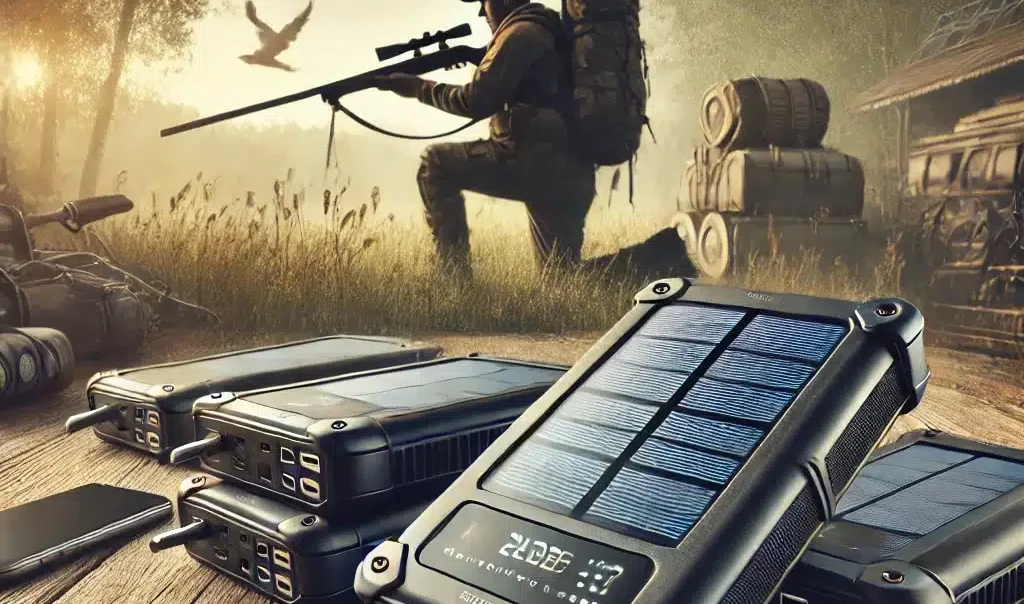
Benefits
- Keep GPS devices, smartphones, and other gadgets charged
- Essential for multi-day hunts or when using power-hungry devices
Top Products
- Anker PowerCore 20100mAh
- Pros: High capacity, fast charging, compact design
- Cons: May be heavy for ultralight hunters
- Price: $30
- Goal Zero Venture 30 Power Bank
- Pros: Rugged, weatherproof, solar-chargeable
- Cons: More expensive than basic models
- Price: $99.95
Considerations
- Choose capacity based on your device needs and trip duration
- Look for rugged, weatherproof models for hunting use
- Consider solar-chargeable options for extended trips
Bluetooth Speakers for Group Communication
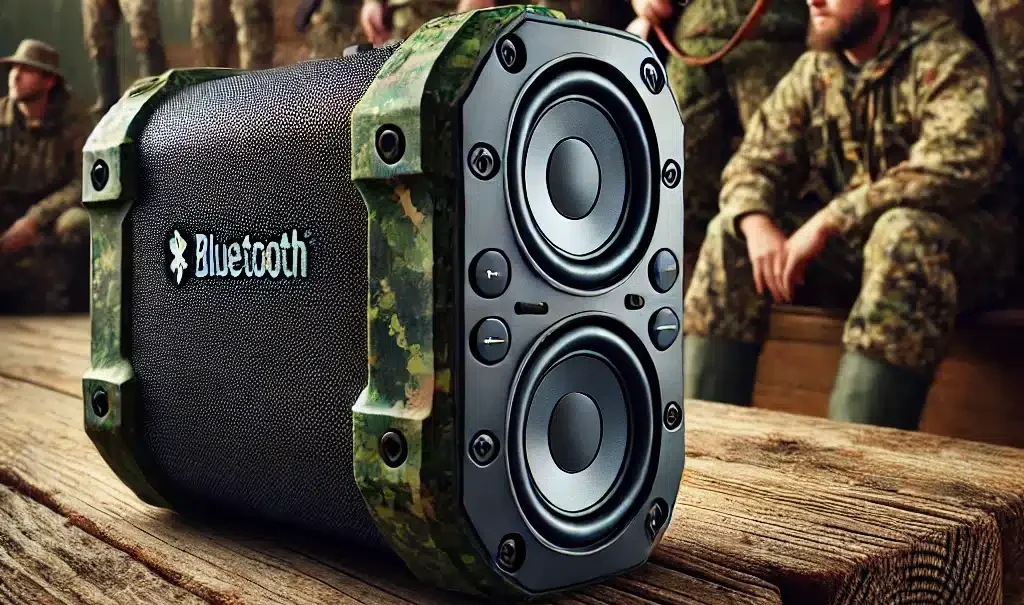
Benefits
- Enhance safety by maintaining group communication
- Coordinate movements during drives
- Share real-time updates on bird locations
Top Products
- Motorola Talkabout T460 Two-Way Radio
- Pros: 35-mile range, weather alerts, water-resistant
- Cons: Range heavily dependent on terrain
- Price: $90 (pair)
- Midland GXT1000VP4 GMRS Two-Way Radio
- Pros: 36-mile range, 142 privacy codes, NOAA weather scan
- Cons: Bulky compared to some models
- Price: $79.99 (pair)
Usage Tips
- Agree on channels and codes before the hunt
- Use voice activation for hands-free operation
- Remember to keep communication minimal to avoid disturbing game
Hunting Smartwatches

Benefits
- GPS navigation and location tracking
- Health monitoring during hunts
- Access to hunting-specific apps and data
Top Products
- Garmin Instinct 2 Solar
- Pros: Solar charging, rugged design, hunting-specific features
- Cons: Expensive, may have more features than some hunters need
- Price: $400
- Apple Watch Series 7 (with cellular)
- Pros: Wide range of apps, excellent health tracking, emergency SOS
- Cons: Shorter battery life, less rugged than specialized outdoor watches
- Price: $499.00
Key Features to Look For
- GPS and topographic maps
- Long battery life or solar charging
- Durability and water resistance
- Hunting-specific apps or modes
Binoculars with Image Stabilization
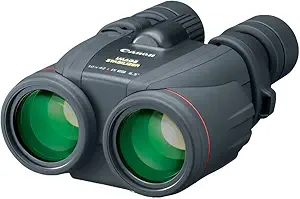
Benefits
- Spot pheasants at a distance without a handshake
- Useful for scanning large fields or dense cover
- Can help in identifying birds and sexing pheasants
Top Products
- Canon 10x42L IS WP Image Stabilized Binocular (shown above)
- Pros: Excellent image quality, effective stabilization
- Cons: Very expensive, heavy
- Price: $1,500
- Fujinon Techno-Stabi TS1440-14×40 Image Stabilized Binocular
- Pros: Powerful 14x magnification, waterproof
- Cons: Expensive, maybe more than needed for most pheasant hunting
- Price: $799
Considerations
- While helpful, these are a luxury item for pheasant hunting
- Consider weight and size for field carry
- Non-stabilized binoculars can be effective and are much less expensive
Portable Weather Stations
Benefits
- Get hyperlocal weather data
- Understand wind patterns for scent control
- Plan hunts based on optimal weather conditions
Top Products
- Kestrel 5500 Weather Meter
- Pros: Comprehensive data, durable, Bluetooth connectivity
- Cons: Expensive, complex for casual users
- Price: $359
- Ambient Weather WM-4 Handheld Weather Station (shown above)
- Pros: Affordable, easy to use, compact
- Cons: Less durable than high-end models, fewer features
- Price: $190
Key Measurements
- Wind speed and direction
- Temperature and humidity
- Barometric pressure
Remember, while these gadgets can enhance your hunting experience, they’re unnecessary for a successful hunt. Always prioritize developing your hunting skills and understanding of pheasant behavior over-relying on technology.
Conclusion: Pheasant Hunting Technology

As we’ve explored the various technological advancements available to pheasant hunters, it’s crucial to consider how to integrate these tools while maintaining the fundamental skills and ethos of hunting. Here’s how to strike the right balance:
The Importance of Not Over-Relying on Technology
- Preserving the Hunting Experience
- Technology should enhance, not replace, the connection with nature
- Over-reliance on gadgets can detract from the immersive experience of hunting
- Remember that unpredictability and challenge are part of hunting’s appeal
- Practical Considerations
- Batteries can die, and electronics can malfunction
- Extreme weather conditions can affect device performance
- Some hunting areas may have poor GPS or cellular coverage
- Ethical Considerations
- Maintain fair chase principles
- Consider the impact of technology on wildlife and habitat
- Respect the traditions and heritage of hunting
Maintaining Core Hunting Skills
- Physical Skills
- Marksmanship: Regular practice at the range is irreplaceable
- Physical fitness: Terrain navigation and long days in the field require stamina
- Dog handling: For those who hunt with dogs, this skill remains crucial
- Mental Skills
- Animal behavior knowledge: Understanding pheasant habits and patterns
- Patience and observation: Key for spotting birds and choosing the right moment
- Adaptability: Ability to change strategies based on conditions and bird behavior
- Fieldcraft
- Reading sign: Identifying tracks, droppings, and other evidence of pheasant activity
- Understanding habitat: Recognizing prime pheasant cover and likely flush zones
- Weather interpretation: Predicting how weather changes will affect bird behavior
- Navigation
- Map and compass skills: Essential backup to GPS devices
- Terrain reading: Understanding how landscape features affect bird movement and hunting strategies
- Safety
- Firearm safety: Technology can’t replace proper gun handling and safety protocols
- First aid: Knowing how to handle emergencies in remote areas is crucial
Integrating Technology Responsibly
- Use Tech as a Complement, Not a Crutch
- Employ devices to enhance your existing skills, not replace them
- Use technology to prepare and plan, but rely on skills in the field
- Start with Basics, Add Tech Gradually
- Master traditional hunting skills before incorporating advanced gadgets
- Introduce one new piece of technology at a time to avoid overwhelm
- Choose Technology That Addresses Your Needs
- Identify areas where you genuinely need improvement
- Select gadgets that solve specific challenges you face while hunting
- Practice With Your Gear
- Familiarize yourself with new devices before the hunting season
- Understand the limitations of your technology
- Share Knowledge Responsibly
- If hunting with less tech-savvy partners, help them understand and use shared devices
- Be willing to hunt without tech when with traditional hunters
- Reflect on Your Hunting Experience
- Regularly assess whether technology is enhancing or detracting from your hunting satisfaction
- Be willing to scale back if gadgets are overshadowing the core hunting experience
Teaching New Hunters
- Start with Fundamentals
- Teach core hunting skills before introducing advanced technology
- Emphasize the importance of understanding animal behavior and habitat
- Introduce Technology Gradually
- Show how each piece of tech relates to and enhances traditional skills
- Explain both the benefits and limitations of hunting gadgets
- Stress Ethical Use
- Teach new hunters about fair chase principles and how technology fits into ethical hunting
- Encourage Unplugged Experiences
- Provide opportunities for new hunters to experience “low-tech” hunts
- Help them appreciate the skills and connection with nature that form the foundation of hunting
By thoughtfully balancing traditional skills with modern technology, pheasant hunters can enhance their experiences and success while maintaining the core values and challenges that make hunting rewarding. Remember, a hunter’s most important tools are knowledge, experience, and respect for the game and the environment.
